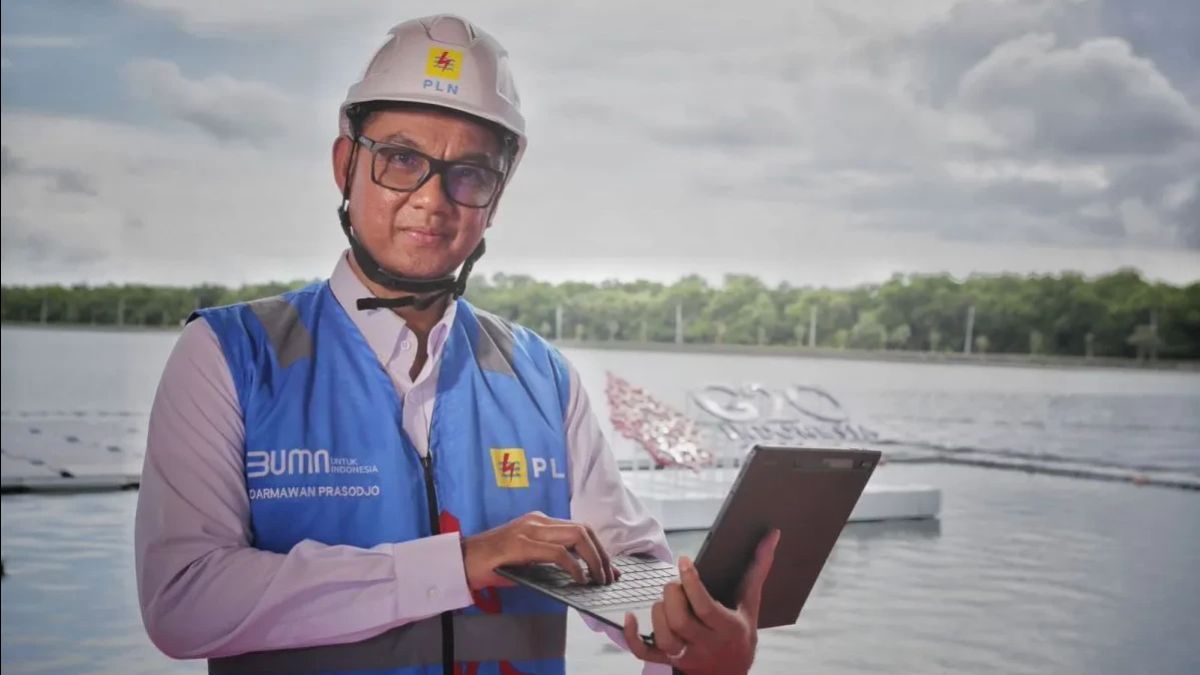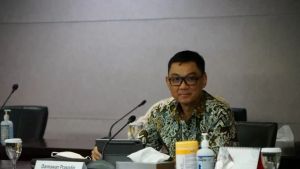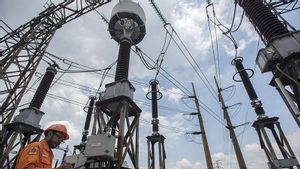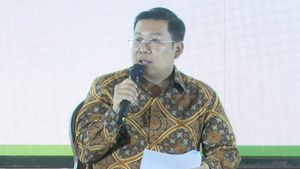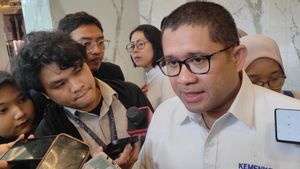JAKARTA - President Director of PT PLN (Persero) Darmawan Prasodjo revealed that his party together with the International Energy Agency and the Ministry of Energy and Mineral Resources (ESDM) have agreed on an Accelerated Renewable Energy Development (ARED) scenario with Coal Phase Down.
According to him, this scenario is to choose the most feasible to run and will be listed in the 2024-2033 General Electricity Supply Plan (RUPTL).
"PLN and KESDM have agreed that the scenario that we will take is the ARED scenario, namely scenario 3 which will be translated into RUKN and operated in the 2024-2033 RUPTL," Darmawan said in a Hearing Meeting with Commission VII DPR RI quoted Thursday, November 16.
In this scenario, he continued, PLN will add 75 percent of new renewable energy-based power plants (EBT), while the rest are Gas Power Plants (PLTG) with a posisi of 25 percent.
In this scenario, Darmo said, the coal-fired Lsictric Power Plant (PLTU) will continue to operate until the contract ends and carbon storage (CCS) technology will be added to suppress the emissions produced by PLTU.
"Of course, here there is an additional renewable energy based on baseload, namely 31 GW, then the renewable energy addition is intermittent, namely wind variables with solar around 28 GW," explained Darmawan.
He also said that there would be an increase in the capacity of the Nuclear Power Plant from the previous 2.4 GW to 5 hngg6 GW.
Darmawan also admitted that the capital expenditure or Capex that must be prepared by PLN for EBT-based generators is not small compared to gas-powered plants. However, the operational costs (Opex) that must be incurred by PLN will also be much cheaper if using EBT compared to gas and coal.
Based on PLN's records, he said the 1 GW gas plant needed a Capex of 500 million US dollars.
According to him, this amount is cheaper than the 1GW hydropower plant with an average of 2 billion US dollars, PLTP 2.7 billion dollars.
"But fuel gas costs are expensive, so if the investment gas is cheap, development is only 18 months but the OPex is expensive. Meanwhile, the PLTA Capex is cheap but the OPex is very cheap," continued Darmawan.
Furthermore, he added, there are four other scenarios that are options, one of which is the business as usual scenario with all coal-based plants assuming that in 2031-2040 there will be additional power plants from these sources.
The second additional scenario is the addition of a generator, which is entirely gas-based.
SEE ALSO:
Darmawan said this scenario also considers the ratio of greenhouse gas (GHG) emissions produced from gas power is much lower than coal.
The third scenario, Ultra Accelerated Renewable Energy Development, which eliminates gas plants.
However, this scenario was not chosen because the system's operations would later become highly unreliable considering that all electricity supplies from the evacuation of power were channeled through transmission.
And the final scenario, the Ultra Accelerated Renewable Energy with Coal Phase Out scenario, where there is a coal early retirement program.
The English, Chinese, Japanese, Arabic, and French versions are automatically generated by the AI. So there may still be inaccuracies in translating, please always see Indonesian as our main language. (system supported by DigitalSiber.id)
